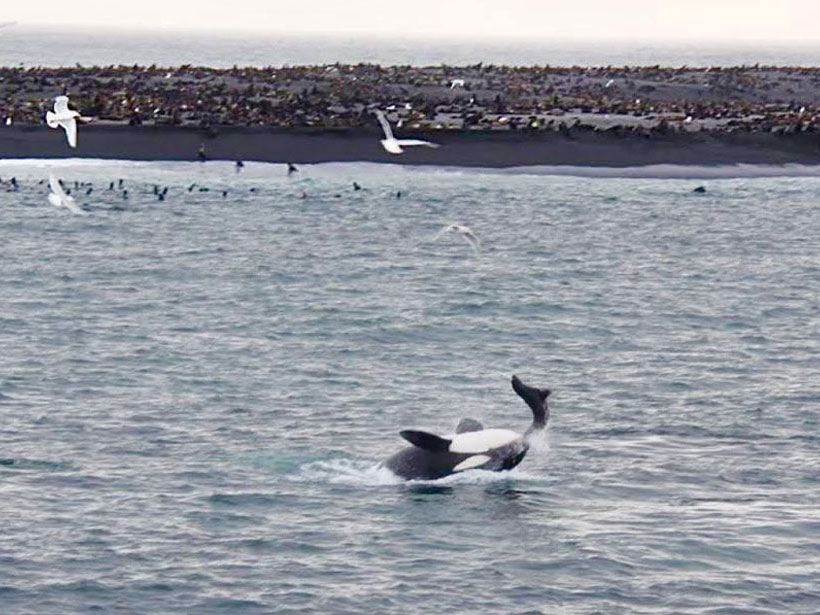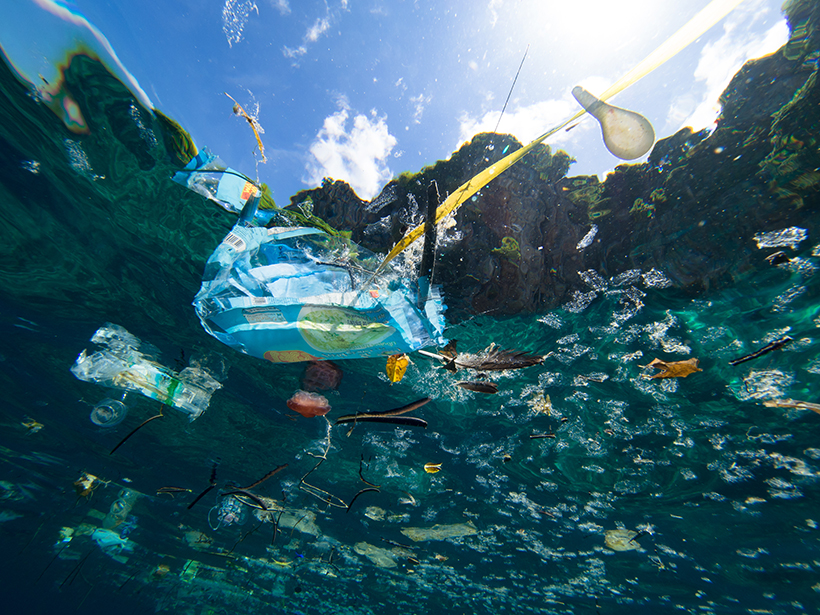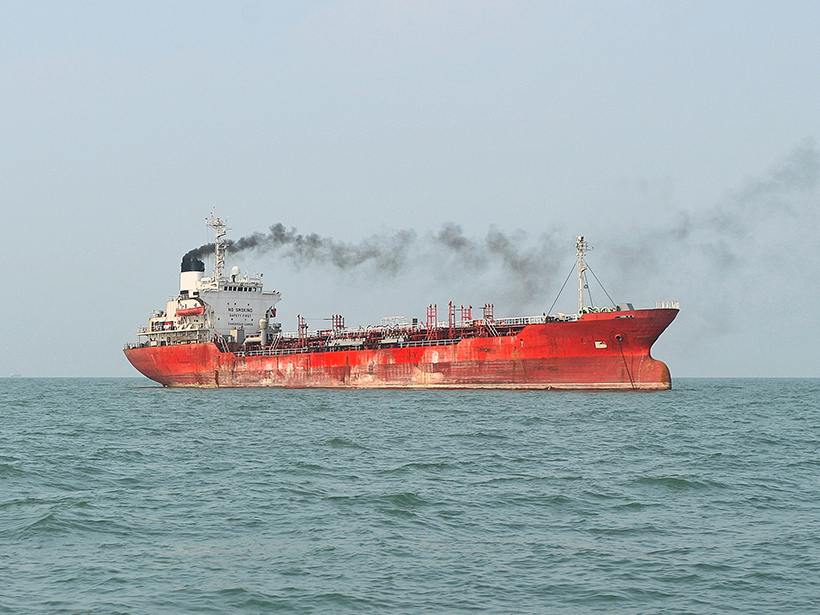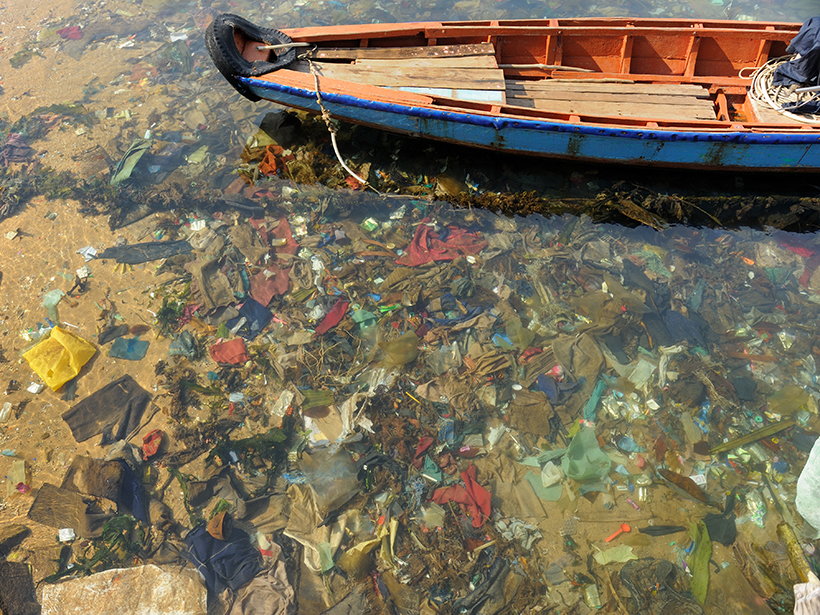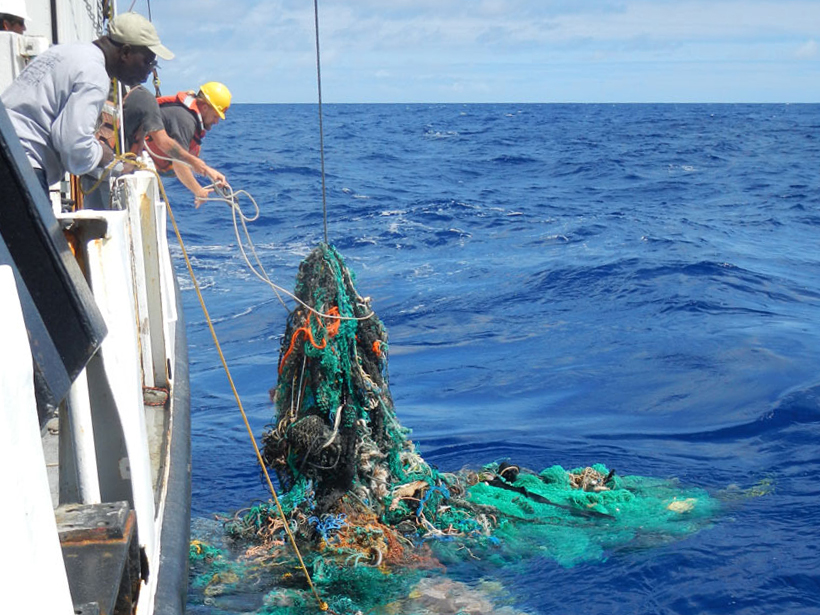Long-distance swimmer Ben Lecomte seeks to raise awareness about plastic pollution in the ocean.
marine debris
A Look at How Long-Banned PCBs Persist in the Ocean
A new study tracks how climatic factors like sea ice cover and ocean circulation affect the life span and distribution of polychlorinated biphenyls in the world’s oceans.
Satellite Imagery Reveals Plastic Garbage in the Ocean
Using high-resolution satellite data, scientists pinpoint discarded plastics floating off the coasts of Canada and Scotland.
The Many Unknown Facets of Plastics in Ecosystems
Few studies have examined lakes or wide swaths of ocean areas, leaving critical data gaps in how plastic pollution affects wildlife and moves across food webs.
Yellow Detritus in the Oceans May Help Reduce Warming
Dissolved organic matter in the oceans absorbs light near the water’s surface, leading to cooler waters that may help mitigate regional climate warming.
Brown Carbon from Increased Shipping Could Harm Arctic Ice
Emission from a ship’s engine gives clues to how much light-absorbing molecules may build up on and above snow and sea ice. Such emissions are likely to increase as more ships venture into the Arctic.
Roving Exhibit Highlights Ocean Plastics Problem
The Ocean Plastics Lab, currently on the National Mall in Washington, D. C., illustrates the pollution threat and points to solutions.
Oil Spill Response Knowledge Grows, but New Risks Emerge
Oil spill expert Nancy Kinner discusses lessons learned from Deepwater Horizon, dangers of aging infrastructure and atomized dispersants, and a Russian plan that imperils Arctic waters.
Pacific’s Garbage Hot Spot Holds More Plastic Debris Than Was Thought
A nonprofit that helped to collect data for the research plans to use the study’s findings to help guide it in an upcoming campaign to remove buoyant plastic trash from ocean gyres.
Spills, Sediment, and Shoreline Contamination
A recent paper in Reviews of Geophysics describes the formation and behavior of oil-sediment residues in marine and coastal environments following an oil spill.


